


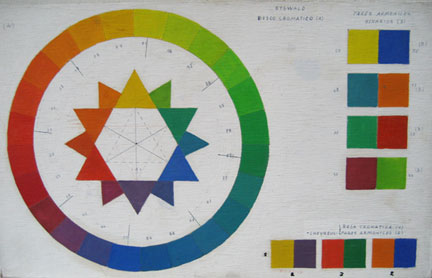
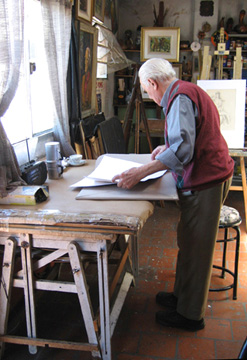
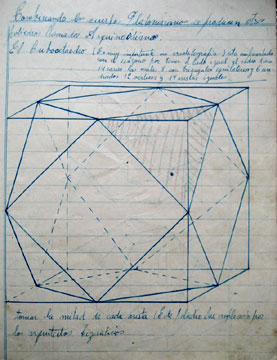
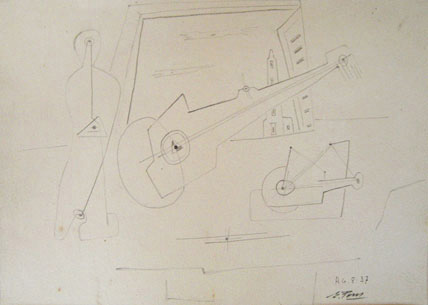 Eolo Pons: In the studio one day, our group was arguing the merits of Matyla Ghyka's theoretical art treatise, when Spilimbergo interrupted us (a surprising event in itself) and stated emphatically:
Eolo Pons: In the studio one day, our group was arguing the merits of Matyla Ghyka's theoretical art treatise, when Spilimbergo interrupted us (a surprising event in itself) and stated emphatically:
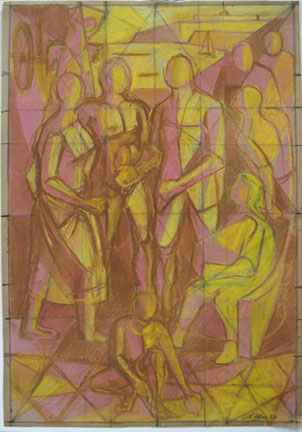 Eolo Pons: My notebooks have served me both as reference and as a tool for teaching my own students. A painter is always changing, but in some ways he is also always the same person. So, ideas or images from one period may develop--or appear spontaneously--much later. You can't know today what may be an important thread at a later time.
Eolo Pons: My notebooks have served me both as reference and as a tool for teaching my own students. A painter is always changing, but in some ways he is also always the same person. So, ideas or images from one period may develop--or appear spontaneously--much later. You can't know today what may be an important thread at a later time.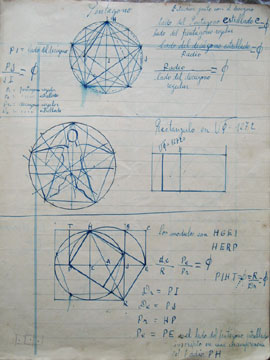
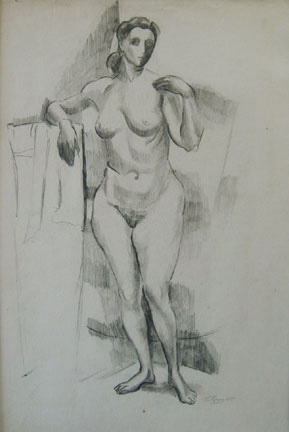 Eolo Pons: Through my academic career and later, I studied the human form not only from a theoretical perspective but also in working from live models. Drawing from life is challenging because you don't always get engaged immediately with the pose or the attitude of the model. Sometimes it takes time to see what is in front of you.
Eolo Pons: Through my academic career and later, I studied the human form not only from a theoretical perspective but also in working from live models. Drawing from life is challenging because you don't always get engaged immediately with the pose or the attitude of the model. Sometimes it takes time to see what is in front of you.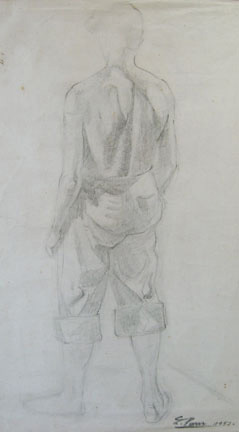
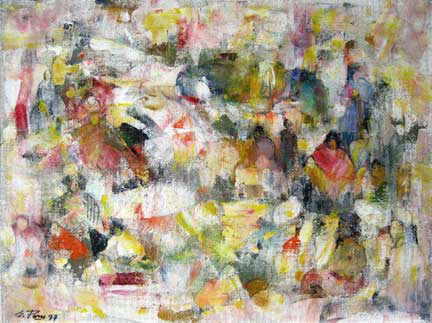 Eolo Pons: Sometimes we would ask the model to strike a pose for just a moment and then to leave the room. Some people could produce a drawing, while others would be at a complete loss. This is a useful exercise not only for learning to see quickly and for capturing the essence of the pose, but also for strengthening the memory.
Eolo Pons: Sometimes we would ask the model to strike a pose for just a moment and then to leave the room. Some people could produce a drawing, while others would be at a complete loss. This is a useful exercise not only for learning to see quickly and for capturing the essence of the pose, but also for strengthening the memory. 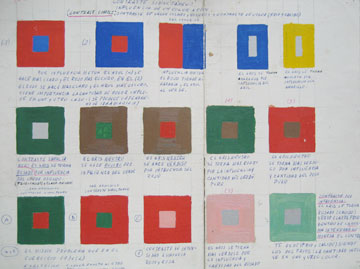 Eolo Pons: When a student says to me, "This blue isn't working", I tell him to look at the color next to it, that is probably where the adjustment needs to be made, not in the blue itself.
Eolo Pons: When a student says to me, "This blue isn't working", I tell him to look at the color next to it, that is probably where the adjustment needs to be made, not in the blue itself.Editor's Note: Color theory, especially the concept of simultaneous contrasts, is sometimes taught using "ColorAid" papers. When we mentioned this development to Eolo Pons, he responded with a look of skepticism--and pity. He then explained that the process of solving color theory problems through actual mixing of paints develops an understanding of color interactions that is indispensable for a painter. 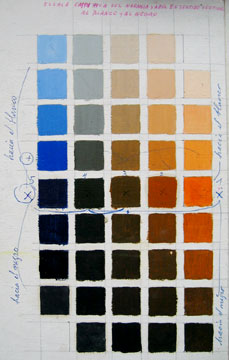
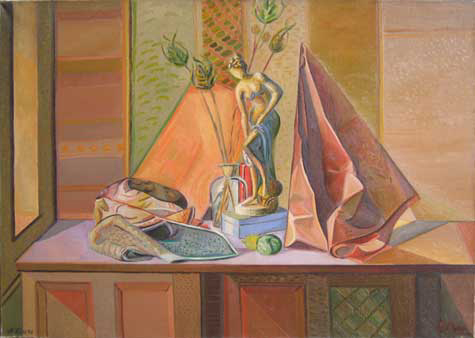
Eolo Pons: Working across the diagonals of these relationships can make interesting color harmonies.
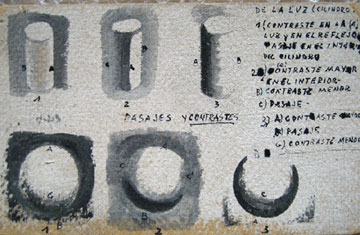
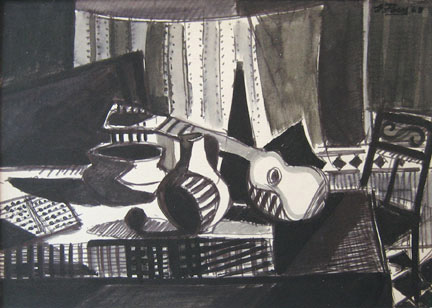 Eolo Pons: When teaching individual students here in my studio, I would set them about painting a still life--often in black and white. This is not because I expected them to become still life painters, but rather because it is a good way to learn how to compose a picture, to see distribution over a surface and to understand how a part relates to the whole.
Eolo Pons: When teaching individual students here in my studio, I would set them about painting a still life--often in black and white. This is not because I expected them to become still life painters, but rather because it is a good way to learn how to compose a picture, to see distribution over a surface and to understand how a part relates to the whole. 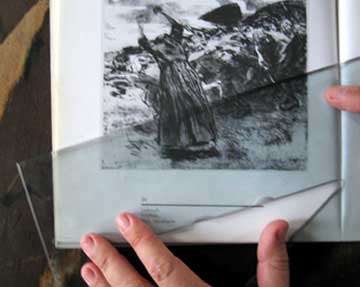
Editor's Note: From 1978-1983, Catalina Chervin studied privately with Eolo Pons. Chervin, whose works on paper are included in public collections including the Albertina (Vienna), British Museum (London), Brooklyn Museum (New York) and Princeton University Art Museum (New Jersey), also teaches drawing at the Museum of Decorative Arts (Buenos Aires).
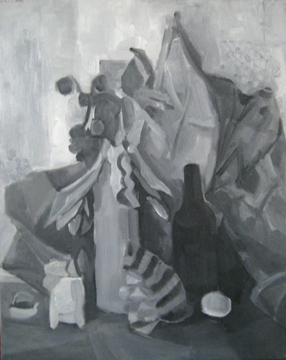
Catalina Chervin: With Pons, I learned to think about art. In art school, I had always been "a good girl" trying to make "a nice painting". Pons would make me concentrate on an individual element of a painting, such as tonal relationships or line. It seems like I spent 5 years just painting still lifes--as in this one in greys.
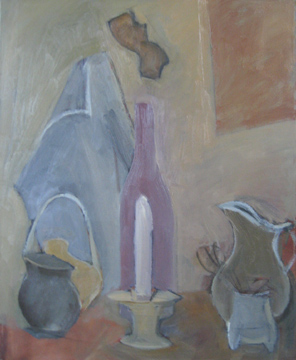
Catalina Chervin: Or in this one composed of colors with similar values--and a little white.
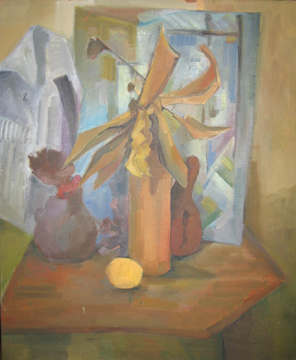
Catalina Chervin: Or in this one where the concern is for linear interest.
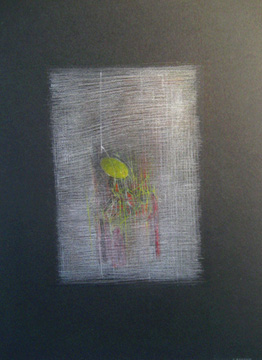
Catalina Chervin: Without a foundation in technique, I don't know how anyone could develop his own work. Of course, now I try to avoid resolving a drawing using just technique--now it requires something more. Otherwise, I would just be making the same piece over and over again.
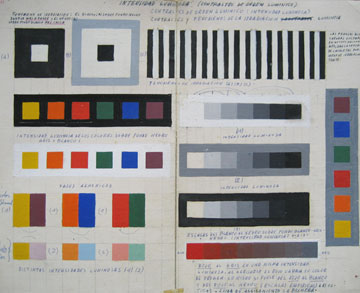
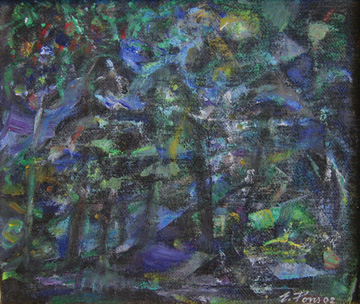
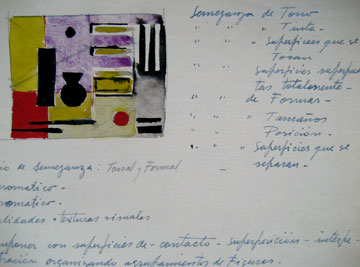
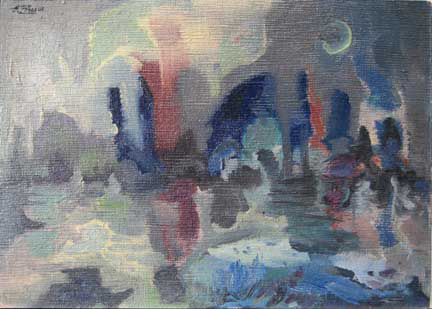
BIDDINGTON'S CREATIVE PROCESS Archives:
Sigmund Abeles Expressive Realist Painter
Javier Astorga Figurative Metal Sculpture
Nancy Azara Sculptor
Tova Beck-Friedman Sculptor & Mixed-Media Artist
Todd Bellanca Abstract Painter
Carol Bruns Bronze Figurative Sculptor
James Burnett Non-Objective Painter
Cynthia Capriata Peruvian Painter & Printmaker
Catalina Chervin Argentine Surrealist Artist
Diane Churchill Expressionist Painter
John Clem Clarke Pop Artist
Lisa Dinhofer Illusionist Painter
Michael Eastman Faux-Primitive Painter
Lynne Frehm New York Abstract Painter
Betsey Garand Minimalist Painter & Fine Art Printmaker
Mary Teresa Giancoli Personal Documentary Photographer
Debora Gilbert-Ryan New Image Painter
Janet Goldner African-Influenced Steel Sculpture
Harry Gordon Monumental Sculpture
Marilyn Greenberg Narrative Abstract Painter
Patricia Hansen Portrait and Still Life Painter
Richard Heinrich Welded Steel Sculpture
Charles Hewitt Painter & Monotype Printmaker
Diane Holland Intermedia Collage Artist
GH Hovagimyan Pop/Conceptual Artist
LA Hughes Pop Artist
Frances Jetter Bronze Sculptor & Editorial Illustrator
Scott Kahn Fantasy Painter
Susan Kaprov Digital Printmaker and Abstract Painter
Babette Katz Narrative Printmaker and Book Artist
Richard Mock Abstract Painter & Linocut Printmaker
Bill Murphy Contemporary Realist Painter
Jim Napierala Abstract Painter
Frances Pellegrini New York City & Fashion Photographer
Eolo Pons Argentine Artist
Joseph Reeder Cross Media Artist Paintings & Ceramics
Laura Shechter Contemporary Realist Painter
Annemarie Slipper Figurative Ceramic Sculpture
Gary Slipper Fantasy Painter
Margaret Speer Landscape & Travel Paintings
Serena Tallarigo Marble Sculptor
Rein Triefeldt Kinetic Sculpture
Vivian Tsao Painter of Light
Nancy Van Deren Contemporary Painter
Joan Berg Victor Drawings from Nature
Edward Walsh Figurative Sculpture in Bronze, Marble & Steel
Kate Wattson Contemporary Colorist Painter
Betty Winkler Organic Minimalist Painter & Printmaker
